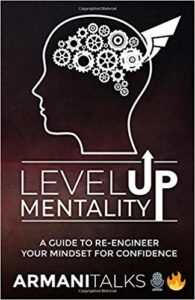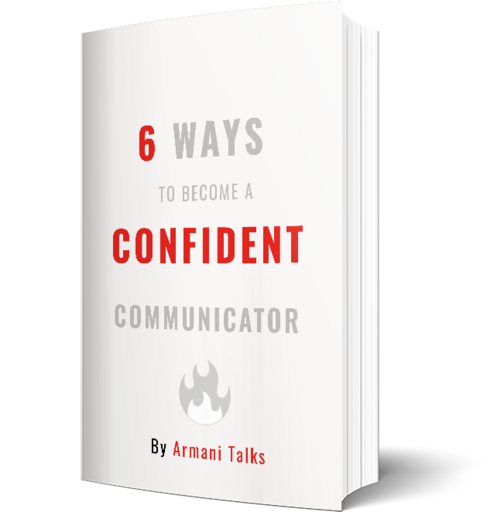Storytelling for Adults made EASY
Normally, when we are thinking of storytelling, it may register as a task reserved for kids.
Either kids tell stories to other kids or parents tell stories to their kids for bedtime.
In the real world, that’s not how it works.
Storytelling is a universal task.
It’s predominately important for adults.
An adult who does not know basic storytelling skills will be pretend heard.
‘Pretend heard?’
That’s when you’ll get a lot of head nods and mhms.
However, the other person is not listening.
The right story at the right time can skyrocket your impact.
Whether you’re in a social setting or a business setting.
Hey, I said that storytelling is universal, right?
In this post, I’m going to get you thinking in a new way in regards to this craft.
We value what we find practical utility in.
Otherwise, it just becomes busywork.
So let’s not consider storytelling busywork anymore.
The Monkey Mind
It’s best to assume that most people you are talking to have the monkey mind.
Heck, I’m assuming that about you right now.
‘The monkey mind? You calling me ugly?’
No. I’m just assuming that you have a distracted mind.
I’ll be pleasantly surprised if you prove me wrong.
However, with the baseline assumption of me assuming that you get distracted easily, I make my points clearly.
When you assume that people have the monkey mind, it’s easier to understand the utility of storytelling.
Envision a wild monkey (which represents their awareness) hopping from banana to banana (which represents thought to thought).
To get this monkey’s attention, you need to have a red banana.
Which in this case, will be your story.
In a world where people are dropping facts and random data points, drop a story.
Have that red banana in your pocket.
Having Others Resonate With You
The beauty about keeping it simple is that it allows for resonation to hit.
Resonation is when someone is matching you in the same wavelength.
I also like to call it systematic empathy.
This is when a shared experience is being discussed.
If you’re still reading this, then you may be curious regarding storytelling in some way.
Maybe you searched for this article on Google.
Or maybe you stumbled across this article on my Twitter feed.
The point is that there is a curiosity within you that wants to learn more about storytelling.
Since this content is regarding storytelling, there is a chance for resonation taking place.
As we mature as adults, the key to enhancing likability is finding resonation points.
Sometimes, people flat-out tell you.
They’ll let you know that they love scuba diving.
If you have a shared experience regarding scuba diving, then you can tell a story on that.
By shared experience, it does not imply that YOU always have to be the one who had that experience.
Maybe you had a co-worker who loved scuba diving and gave you information on it.
Other times, people do not flat-out tell you their resonation point.
So when you can figure it out anyways, that shows social intelligence on your end.
Such as you spotting someone at a networking event asking for basic directions and things to do around the area.
It’s easy to spot that this person is new to town.
A story about how you moved to a new location in your past is bound to spark this person’s curiosity.
We pay attention to people who subtly remind us of us.
Fundamentals of a Basic Story
Storytelling for adults is a lot like basketball.
If you understand the basic rules of basketball, then you can tell a story.
3 fundamental components needed for basketball are:
-Player
-Hoop
-Ball
Imagine I just give a player a ball but no hoop. What can he do?
- Maybe some dribbling in circles, but that’s about it.
Imagine I just give a player a hoop but no ball. What can he do?
- Maybe practice jumping to touch the rim.
Both situations are boring.
Now imagine I give the player a ball and a hoop. What can he do?
PLENTY.
Dribble, rebound misses, make jump shots, dunk etc.
The analogies are:
-Player = Storyteller
-Hoop = Point of your story
-Ball = Words
With all the tools, you can make a point, introduce a conflict, create characters etc.
Now you see how 2 disparate fields have similarities.
So let’s talk about the workflow of how to do storytelling for adults.
Crafting a Basic Story
There is only one step bud…
Find your hoop.
The best stories in a conversation setting are spontaneous.
Even if you did want to plan, you probably will not be able to.
Because the pacing of a conversation moves fast.
Therefore, storytelling for adults should not be slow.
You just need to find your hoop.
The more general your hoop, the longer your talk is.
The more targeted your hoop, the shorter your talk is.
So if I said that my hoop is, happy, then that’s very general.
I can talk about that for hours.
In a conversation setting, that’s probably not the wisest.
Let me target the hoop and make it more specific.
I want to share a story of how happy I was to pass my exam after failing the first 3 times. I want to make the other person laugh.
This is a hyper-targeted hoop.
Now you can dribble your words in a unique fashion to bring that point to life.
- A hyper-targeted hoop will have the words present themselves.
You don’t need to get super intellectually focused.
The key is to find a hoop that resonates with you.
Not something that you need to do a bunch of research for.
‘Armani, how do I know if I’m being specific enough?’
It honestly just needs to be a problem and how you overcame the problem or fell short of solving it.
If you want to get even more targeted, envision the kind of emotion that you want to evoke in the listener/s.
Storytelling for Adults Never Gets Old
I had a coworker who once talked my ear off for 20 minutes.
He talked about birds, his recent marriage, how he was 50 but didn’t look like it…
Throughout the talk, I noticed he didn’t say much.
Just mindlessly hopping from subject to subject until someone stopped him.
This is the works of a monkey mind.
Hopping from one banana to the next.
This is a guy dribbling the ball away but doesn’t have a hoop.
Don’t be like my coworker.
There really is one step to work on.
Find your hoop.
Keep practicing on finding a hoop for each story.
Understand who you’re speaking to, your and their background, what resonates with you etc.
Remember champ…
You can’t make someone feel something that you don’t feel for yourself.
Storytelling doesn’t have to be difficult.
Even an adult can do it.
For more practical communication insights, subscribe to my free daily newsletter.
– ArmaniTalks 





